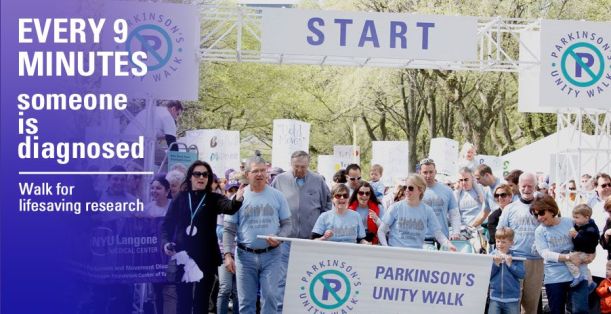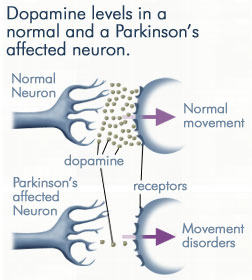This Saturday, The Parkinson Alliance will be hosting its annual fundraiser Unity Walk in Central Park, in New York City. One hundred percent of donations from this 1.4-mile walk go toward research on Parkinson’s disease (PD).
The Princeton-based Parkinson Alliance is the umbrella organization responsible for Unity Walk, the largest single-day fundraising and awareness event for the disease. The Parkinson Alliance is a national non-profit with the mission to help fund research to identify the cause and the cure for this neurodegenerative disease.
The walk funds research for the disease, which currently has no cure. It also promotes awareness—among patients and the medical community. “At least 25 percent of people with PD are misdiagnosed,” said Carol Walton, CEO of The Parkinson Alliance. “It depends on where you live—if you have access to bigger cities, it’s easier to get diagnosed.”
Parkinson’s Disease is a progressive movement disorder, where neurons of the brain, primarily in the substantia nigra, malfunction and die. Substantia nigra is one of the brain’s control centers for movement. Its cells produce and release dopamine, the neurotransmitter that controls movement, balance and coordination, as well as helps to maintain a healthy nervous system. As PD progresses, dopamine decreases, leading to a patient’s inability to normally control his or her movement.
“Everyone’s disease progresses at a different level,” said Walton. “You can live a very good quality of life if you have access to this knowledge about the disease and strong support.”
Depression and distancing one’s self from the outside world is fairly common for patients after they are initially diagnosed with PD. Some grow self-conscious of the physical symptoms of PD, which include tremor, slowness of movement and stiffness in the limbs and trunk, as well as postural instability.
“If you can get them into any kind of exercise class, endorphins help depression and getting you back out into the world,” said Walton. “The Unity Walk is a wonderful venue to get you back in circulation.”
Activist Margot Zobel founded the Parkinson’s Unity Walk in 1994. After being diagnosed with PD, she wondered why there were no events in New York City supporting Parkinson’s. After attending her first Parkinson’s Action Network’s Advocacy Forum in Washington, DC, she organized a walk along Central Park West two months later.
Twenty years later, the walk continues to provide a place for people with PD to feel accepted among peers, learn more about the disease and the latest research and treatments.
“People with Parkinson’s freeze a lot, but you never hear any comments about it when you are surrounded by people who also have PD,” said Walton. ”The Walk is so helpful to people, very uplifting, inspiring and a fun kind of day.”
Folks from 15 states and 23 countries attended the annual walk last year, said Walton. The walk is open to participants in walkers, wheelchairs and more. Those who don’t walk can still benefit from the educational talks and resources available from vendors.
The outreach to people with PD is vital. There was a recent study of Medicare recipients who were diagnosed with PD. “More than 40 percent have never seen a general neurologist,” said Walton. “Twenty percent never see the neuro more than once a year. We have a huge challenge in the area of education to get that info out. The walk helps to provide great resources and point you in right direction.”
Many who attend the Unity Walk for the first time come away with a new perspective on PD. Ask the Health experts and representatives from major U.S. Parkinson’s foundations, as well as businesses who provide treatments for PD are be available to attendees of the Unity Walk.
“There are people who have never heard of a movement disorder specialist,” said Walton. “When they finally get in to see one, they call back saying they didn’t know how many medications or therapies there were for people with PD. This is about giving people a new outlook on life.”
According to Walton, getting proper sleep and exercising are two of the most important things people with PD can do for themselves. At the Unity Walk, there are tai chi for Parkinson’s demonstrations, Dance for PD and other exercise activities in which attendees can participate.
Margaret Tuchman, president of The Parkinson Alliance, has had PD for 36 years. “Chair yoga taught her a lot about breathing, which helps with swallowing—a common problem with folks with PD,” said Walton.
When asked what was the best type of exercise for PD, she replied, “The one that you’ll do, you’ll enjoy and make sure you keep doing.”
Walton added, “We have living proof that exercise has protective effects.” She mentioned John Ball, author of Living Well, Running Hard: Lessons Learned from Living with Parkinson’s Disease . Ball has been living with Parkinson’s for more than 25 years. “He has run 26 marathons, one ultra-marathon and a half-marathon,” said Walton.
There is still time to register for the Unity Walk, which takes place Saturday, April 26—rain or shine—at the 72nd Street Bandshell, Central Park, New York, NY. Registration opens at 8:30 a.m., and booths begin opening at 9 a.m. The walk kick-off begins at 9:45 a.m., followed by the walk at 10 a.m.
While there is no registration fee, donations are encouraged by registered walkers. Walking is optional, and for those who are unable donate as well, there is plenty of free access to great education about the disease at the walk.
People can also sponsor a walker or make a general donation online to the 2014 Parkinson’s Unity Walk.
For those who cannot attend the Unity Walk live, the talks and informational presentations are recorded. People will have access to the information online for a year.


Leave a Reply